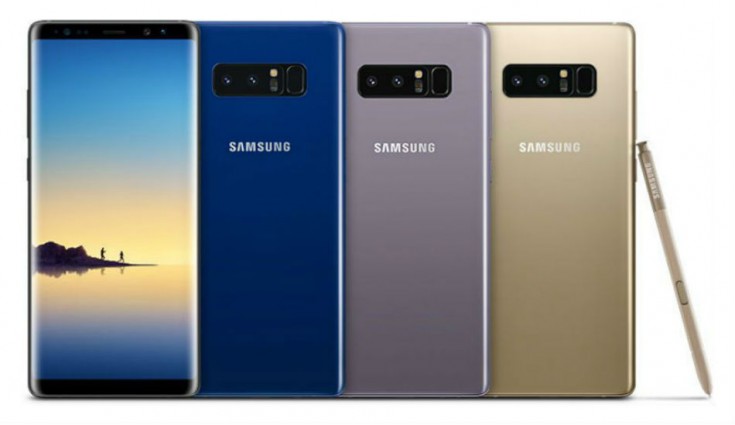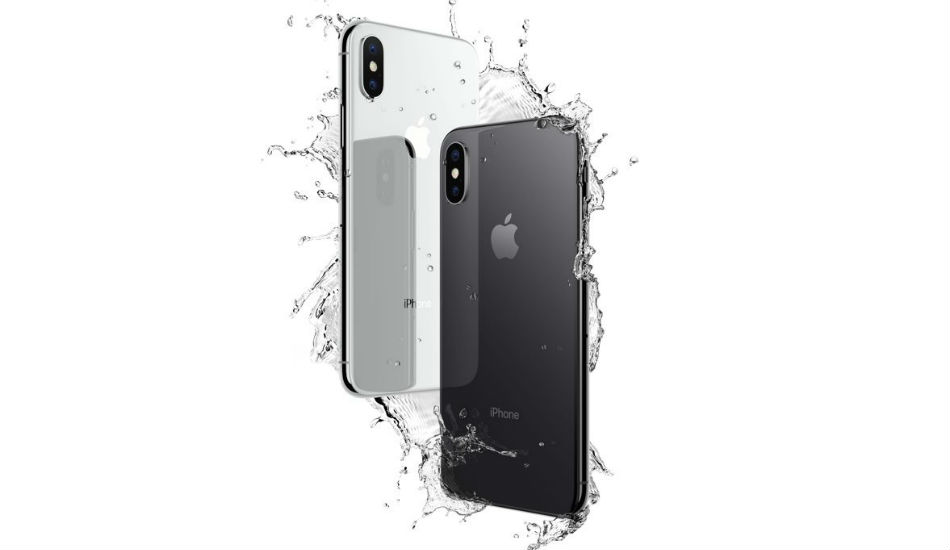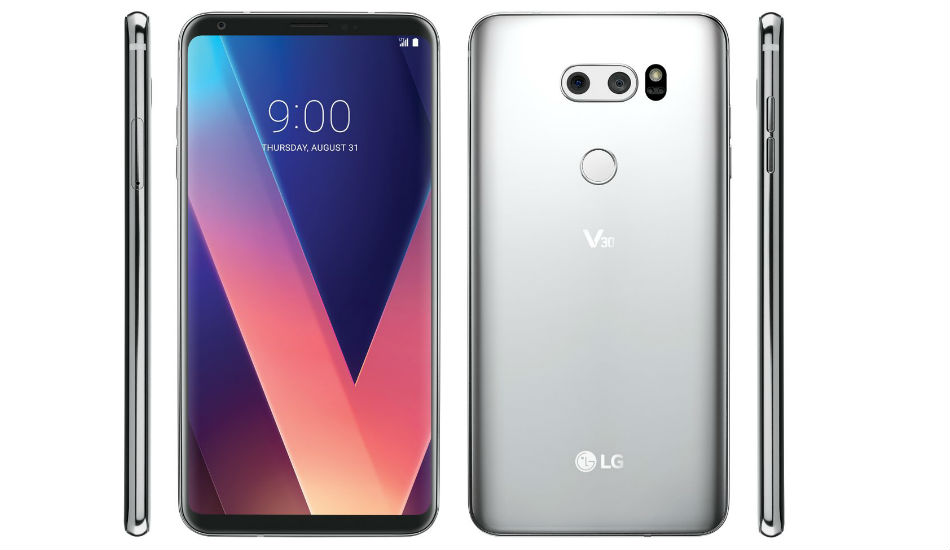The year 2017 saw a paradigm shift in the premium segment. We saw some really good smartphones, which disrupted the market with their unique features and top-of-the-line performance along with premium design.
We saw brands like Samsung, which brought a killer smartphone with the launch of Samsung Galaxy Note 8. Apple was not far behind and it brought a completely different concept with its most expensive iPhone X. LG was one brand that brought its latest flagship device at a very competitive price and OnePlus once again brought the true flagship killer.
With a sea of options, it becomes a difficult task to select a smartphone that is best suited for you. But you need not worry! We have handpicked the best smartphones that give some top-of-the-line performance in almost every department under different price segments. So, without further ado, here is the list of the top 5 smartphones of 2017.
Samsung Galaxy Note 8
Starting with the Galaxy Note 8, the smartphone is probably the best smartphone from Samsung. The device comes loaded with a host of interesting features and the new 18:9 display gives a pretty amazing look. The S Pen is also a plus point of the Note series and using the Pen with the Infinity display was pretty immersive experience during our testing. Coupled this with some premium and sleek design and top-of-the-line performance, the Galaxy Note 8 is surely one the best smartphones of 2017.
The major highlight of the smartphone is the dual rear cameras. This is the first Samsung device to come equipped with a dual-camera setup. The phone sports a combination of 12-megapixel Wide-Angle lens and 12-megapixel telephoto lens, with both sporting optical image stabilization (OIS). The wide-angle lens comes with Aperture f/1.7, 1.4-micron pixel size, 77-degree field of view.

The telephoto lens comes loaded with aperture f/2.4, 2x optical zoom, up to 10x digital zoom. The camera is equipped with different modes including Live focus, food mode, pro mode, panorama and slow motion. For the front, there is an 8-megapixel shooter with autofocus, f/1.7 aperture and wide-angle lens.
The Samsung Galaxy Note 8 features a 6.3-inch Quad HD+ Infinity Super AMOLED Display with a screen resolution of 2960 x 1440 pixels. The device is powered by a 2.3GHz octa-core Exynos 8895 processor along with 6GB of RAM and 64GB of internal storage, which can be further expanded up to 256GB via micro SD. The Galaxy Note 8 runs on Android 7.1.1 Nougat and it is backed by a 3300mAh battery with fast charging support on both wired and wireless. On the connectivity front, it supports 4G VoLTE, WiFi 802.11ac, VHT80 MU-MIMO, Bluetooth 5.0, GPS, USB Type-C, NFC, MST and hybrid dual-SIM.
For security, the company has added iris scanner, facial recognition and fingerprint sensor, which is situated on the back panel. The device also comes loaded with Knox protection and it is equipped with company’s in-house virtual Assistant Bixby. The device measures 162.5 x 74.8 x 8.6mm and weighs 195g.
Apple iPhone X
Apple really changed the whole perception of a smartphone by introducing iPhone X. The latest iPhones is a first in many departments. To start with, the device features the latest True Depth sensor, which is already considered as the next generation of biometric authentication. The phone features a pretty immersive screen, though the top notch might look odd for some. And not to forget that this is the most expensive iPhone ever.
The iPhone X is priced at Rs 89,000 for the 64GB variant and a whopping Rs 1,02,000 for the 256GB variant. The iPhone X features a bezel-less display and sports a 5.8-inch Super Retina Display, which is made out of OLED screen. The screen comes with a resolution of 2436 x 1125 pixels and has a Pixel density of 458ppi. The latest iPhone sports a glass back and is strengthened with stainless steel frame. The display also supports HDR 10 as well.

Moving on, the iPhone X sports a new TrueDepth Camera, which the company claims is used to map user’s face and unlock it using FaceID. The new iPhone X is powered by the latest A11 Bionic chip with a neural engine, which the company helps improve machine learning algorithm. The neural engine comes with a dual-core processor. Apple says FaceID is safer as compared to the TouchID.
On the camera front, the device sports a dual-camera setup at the back, which is aligned vertically. The dual rear cameras come with a combination of 12-megapixel wide angle lens with aperture f/1.8 and 12-megapixel telephoto lens with aperture f/2.4 with both the Sensors support Optical Image Stabilisation (OIS). The iPhone X also comes loaded with a new Portrait lighting mode both on the front and back, which basically advance version of the portrait mode. For the front, there is a 7-megapixel camera.
LG V30+
This is the first device from LG camp to feature an OLED display. The LG V30+ comes loaded with a pretty sleek design and this time the company has got the pricing just perfect. Priced at Rs 44,990, the smartphone does give you premium look along with some top-of-the-line performance.
The major highlight of the smartphone is the dual-camera setup. The smartphone features 16-megapixel standard lens with aperture f/1.6, optical image stabilization (OIS), electronic image stabilization (EIS) and hybrid Autofocus that combines both Laser Detection Auto Focus and Phase Detection Auto Focus. and 13-megapixel wide-angle lens with aperture f/1.9 and a 120-degree field of view.

Talking about key specifications, the smartphone comes loaded with a 6-inch QHD+ P-OLED FullVision display with a screen resolution of 2880 x 1440 pixels and it bears an aspect ratio of 18:9. The device is powered by the latest Qualcomm Snapdragon 835 processor along with 4GB of RAM and 128GB of storage option, and it offers up to 2TB of expandable storage.
The smartphone runs on Android 7.1.2 Nougat and it is backed by a 3,300mAh battery. The phone also comes loaded with Quick Charge 3.0, that the company claims can charges the device from empty to 50 percent in around 30 minutes. The V30+ also offers wireless charging as well. On the connectivity front, it supports Wi-Fi 802.11 a/b/g/n/ac, Bluetooth 5.0 BLE, NFC, USB Type-C 2.0 (3.1 compatible) and Dual-SIM support.
OnePlus 5T
The OnePlus 5T comes with a price tag Rs 32,999 for the 6GB RAM variant, while the 8GB RAM option comes with a price tag of Rs 37,999. Recollecting some key specifications, the device features a 6.01-inch Full Optic AMOLED display with a screen resolution of 2160 x 1080 pixels and an aspect ratio of 18:9. The display will be protected by a 2.5D Corning Gorilla Glass 5.
On the camera front, it features a dual-camera setup at the rear panel with a combination of 16-megapixel sensor with aperture f/1.7, Sony IMX 398 sensor, 1.12 micron pixel size, dual LED flash and focal length of 27.22mm, while the secondary camera bears 20 megapixels Sony IMX376K sensor along with aperture f/1.7, 1.0 micron pixel size and focal length of 27.22mm.

For the front, you get a 16-megapixel selfie camera with Sony IMX371 sensor, f/2.0 aperture, and 1.0-micron pixel size. OnePlus 5T run on Android 7.1.1 Nougat based on Oxygen OS. The latest smartphone will receive the latest Open Beta for Android Oreo in late December. Further, there are new parallel apps as well. The phone bears a 3,300mAh battery along with Dash Charge technology for fast charging.
Under the hood, the smartphone will be powered by the latest Qualcomm Snapdragon 835 processor along with Adreno 540 GPU. The OnePlus 5T will come in two configurations: 6GB LPDDR4X RAM + 64GB storage and 8GB LPDDR4X RAM + 128GB storage options. The smartphone features a new Face Unlock feature, which can unlock the smartphone in 0.3 seconds. The fingerprint sensor is moved on the rear panel and it can unlock the device in just 0.2 seconds.
On the connectivity front, the OnePlus 5T will support MIMO 2×2, WiFi 802.11 a/b/g/n/ac, Bluetooth 5.0, NFC, Headphone jack, GPS, GLONASS, BeiDou, Galileo, USB Type C 2.0, fingerprint sensor and dual-SIM. For audio, the phone bears three microphones with noise cancellation and it supports AANC and Dirac HD sound. The phone will measure 156 x 75 x 7.25mm and weighs 162 grams.
Google Pixel 2 XL
The Google Pixel 2 XL sports a 6.0-inch QHD+ pOLED display with a screen resolution of 2880 x 1440 pixels. It comes loaded with a new Always-on Display and is protected with 3D Corning Gorilla Glass 5 protection. Further, both the devices are Daydream-ready, meaning that they are optimised for virtual reality.
The Google Pixel 2 XL sports a 12.2-megapixel rear camera with 1.4-micron pixel size sensor, aperture f/1.8, optical image stabilisation, electronic image stabilization, dual pixel phase detection + autofocus with laser and 4K video recording. For the front, there is an 8-megapixel camera with f/2.4 aperture, fixed focus and 1.4-micron pixel sensor.
![]()
On the hardware front, it is powered by the latest Qualcomm Snapdragon 835 processor along with Adreno 540 GPU backed by a 4GB of RAM and comes in 64GB or 128GB storage variants. The smartphone runs on the latest Android 8.0 Oreo and the company has also introduced an ActiveEdge feature, through which one can squeeze the edges to activate Google Assistant. On the battery front, the Google Pixel 2 XL sports a 3520mAh battery.
On the connectivity front, it supports Wi-Fi 2.4G + 5GHz 802.11 a/b/g/n/ac 2×2 MIMO, Bluetooth 5.0 + LE, NFC, eSIM, USB Type-C port and GPS. other than this, the smartphone comes loaded with IP67 certifications, front-firing stereo speakers and more.


